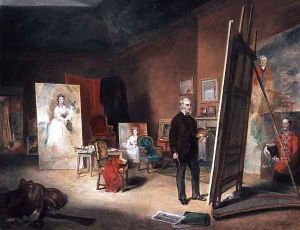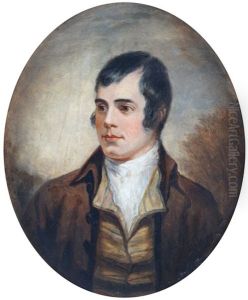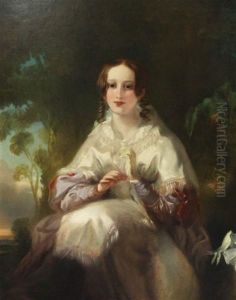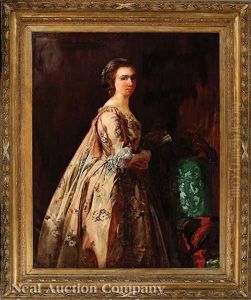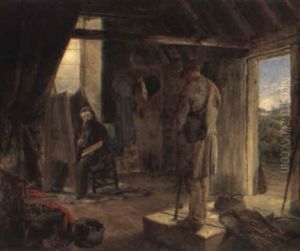John Ballantyne Paintings
John Ballantyne was a significant Scottish artist known primarily for his portraits and genre scenes, capturing the essence of Victorian Scotland. Born in 1815, in the Scottish Borders, Ballantyne developed an early interest in art, which was nurtured by the vibrant cultural scene of Edinburgh. The city, a hub for intellectual and artistic movements during the 19th century, provided a fertile ground for his artistic development.
Educated in Edinburgh, Ballantyne initially embarked on a career as a jeweler and watchmaker, a common practice for young artists of the time to secure a stable income. However, his passion for painting soon took precedence, leading him to pursue art full-time. By the 1840s, Ballantyne had established himself as a portrait painter, receiving commissions from notable figures of Scottish society. His style was characterized by its realism, attention to detail, and the ability to capture the personality and essence of his subjects.
Throughout his career, Ballantyne exhibited at prestigious institutions such as the Royal Scottish Academy and the Royal Academy in London, gaining recognition and respect among his peers. His works were celebrated for their portrayal of contemporary life and the Scottish landscape, contributing to the national identity of Scotland through art. Ballantyne's genre scenes, often depicting everyday life in Scotland, were particularly admired for their narrative quality and technical skill.
In addition to his contributions to the visual arts, Ballantyne was also involved in the broader cultural and intellectual life of Scotland. He was an active member of various artistic societies and frequently engaged in discussions on art and its role in society. His legacy extends beyond his paintings, as he played a part in shaping the artistic community in Scotland during the 19th century.
John Ballantyne passed away in 1897, leaving behind a rich body of work that continues to be celebrated for its insight into Victorian Scotland. His portraits and genre scenes not only provide a window into the era but also reflect the artistic and cultural dynamism of the period. Through his art, Ballantyne captured the spirit of his time, making a lasting contribution to Scottish art history.
